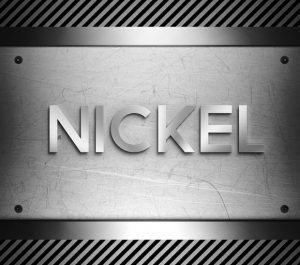The LME nickel price debacle continues
Well, if you thought the London Metal Exchange’s unprecedented suspension of trading last week took the steam out of the nickel market and nickel prices, and that the world would revert to orderly conduct Wednesday when the LME resumed trading, you would have been wrong.
Nickel price chaos
The LME had set trading limits of 5% price movement above and below the last close as a signal to the market of their expectations. That is somewhat akin to the Fed setting expectations of future interest rates in the hope the market would align with that expectation.
But the exchange halted trading almost immediately after it opened Wednesday. Nickel prices crashed below the 5% limit and the LME suspended trading again. The market took the news that major short position holder Tsingshan Holding Group would no longer need to buy metal immediately to cover its positions, after reaching an agreement earlier this week with its banks to avoid margin calls and wind down its positions.
“As the market opened (the electronic system) discovered an opening price of $45,590,” the LME said in a trading update. “Unfortunately, due to a systems error, LMEselect then allowed a small number of trades to be executed below this lower daily price limit.”
The exchange said all trades executed on the LMEselect system at the lower daily limit would remain. Those below, however, would be canceled.
Long position holders cry foul
Last week’s suspension was accompanied, rightly, by howls of protest from those long position holders who had stood to make substantial profits, only to have them whisked off their desk by the LME’s suspension.
In their defense, the exchange would say it was seeking to protect the physical industrial users — for whom price discovery and hedging are the exchange’s raison d’être — from the consequences of financial speculators.
You can see both sides of the argument.
Better oversight of market participants could have prevented this from happening.
Keep up to date on developments in the LME — and much more — in the MetalMiner weekly newsletter.
SHFE resumes trading
Meanwhile in China, the SHFE resumed trading after just one day closure last week. SHFE nickel has been trading around Yuan 235,000 or $37,000 per ton this week.
Of course, that immediately became the target price for the LME when trading reopened.
The SHFE is now leading the global nickel market. It will take time for the financial community to get over the shock of having trade suspended not once but twice. Indeed, they may never get over it.
A more permanent shift eastward may be the result.
The SHFE has trading limits, too, following last week’s one-day close. However, its limits are wider at 17%. The Shanghai price did rise some 7.3% Wednesday, as arbitragers pounced on the still huge delta between London and Shanghai.
Track the LME and SHFE nickel prices on the MetalMiner Insights platform.
Tsingshan gets a break
As to the culprit of this debacle, Tsingshan, their counterparty banks have seemingly thrown them a lifeline.
A Reuters post explains how Tsingshan will be given time to physically deliver 4,000 tons of nickel warrants from two nickel users with whom it will arrange swaps of nickel pig iron and nickel matte (the only grades Tsingshan produces but which aren’t deliverable on the LME).
What is unclear is the full extent of the company’s exposure.
The aforementioned 4,000 tons are the tip of the iceberg. Some Chinese media outlets reported the company still has some 200,000 tons of short positions. That is against a total real-world nickel output estimated for this year of 850,000 tons.
Shorting 25% of your annual capacity as a financial bet is a madness we all thought we had seen the end of with the Sumitomo copper crisis. No doubt heads are already rolling back in Shanghai.




Leave a Reply